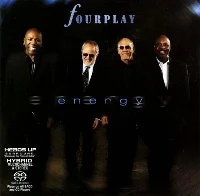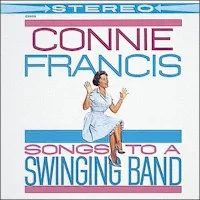Year: 1960/2011
File: MP3@320K/s
Time: 36:25
Size: 84,4 MB
Art: Front
(3:45) 1. My Dear Little Sweetheart
(3:45) 2. Indian Summer
(3:08) 3. Softly, as in A Morning Sunrise
(4:20) 4. All the Things You Are
(3:53) 5. It's So Peaceful in The Country
(3:14) 6. Once In A While
(3:27) 7. Flamingo
(3:06) 8. Spring is Here
(3:49) 9. Violets For Her Furs
(3:53) 10. It Never Entered My Mind
Guitarist Johnny Smith's career spans the decades of the 1940's through the 1990's. From the very beginning of his musical career he influenced the playing of other guitarists. In fact, many mention Smith as a major influence on their playing. The major guitar builders as Guild, Gibson, Benedetto, and the Heritage all have their signature Johnny Smith high end models as a tribute to this master. John Henry Smith, Jr. was born in Birmingham, Alabama in 1922 and was only five years old when he became fascinated with the guitar. His father played five-string banjo but guitar was John's first and lasting love. Initially he was frustrated by the lack of a guitar teacher or instruction manuals: determined to master the instrument, he taught himself to play. Many outstanding and individual jazz soloists have fallen back on the empirical method for the same reason as Smith and emerged with wholly distinctive sounds. In 1935 the Smith family moved to Portland, Maine: Johnny was 13 and good enough to play in local bands.
In 1942 he joined the USAAF (he was already a student pilot) and ended up in a band which needed a cornet player rather than a guitarist. In six months he had learned the cornet well enough to be given the position of first cornetist. After his discharge from the Air Force in 1946 he went back to Portland to play both guitar and trumpet on local radio as well as playing in clubs at night, but the pay was never very good. He went to New York to work as an arranger at NBC and in 1947 he became a member of the NBC orchestra. For eight years he worked with the orchestra as guitarist, trumpeter, arranger and composer.
Although he had been greatly influenced by Django Reinhardt and Charlie Christian at the outset (he learned Django's solos from record and actually met the Gypsy guitarist when he came to the United States in 1946) Johnny did not consider himself to be a jazz musician. Nevertheless, he made his first record as leader in March 1952, in the company of Stan Getz, Eddie Safranski, Sanford Gold and Don Lamond. One title from that date, “Moonlight in Vermont,” was a turning point in Smith's career despite its short duration. “Vermont” was made for the Royal Roost label (frequently abbreviated to Roost Records) and the company signed Smith to a long-term contract during which time he produced around 20 albums. Roost was later absorbed by Roulette which reissued several of Johnny's LPs. Most of the albums featured solo guitar or a trio; two backed Smith with strings playing arrangements the guitarist wrote himself. There was a great appeal to Smith's graceful, melodic treatment of superior tunes. Not only the record-buying public but hundreds of guitarists found the music entrancing. The dexterous fingering, the perfection of manner in which he ran chords and arpeggios, all contributed to the acclaim for Johnny's work.
During his tenure at Roost Records, he produced a long list of significant recordings that include the great quartet recordings: “The Johnny Smith Quartet,” and “The Sound of The Johnny Smith Guitar” among others. Also, during this period he made the “Man With The Blue Guitar.” This album, unusual for its time, has probably been transcribed more than any other Johnny Smith recording. Then there was the production “Annotations of The Muses,” on which Johnny Smith displays everything that made him a great musician and an extraordinary guitar player. Johnny Smith retired from the jazz scene in the 1960's to Colorado where he opened a music store. He continued to play in local nightclubs and made a recording with some local musicians “Reminiscing,” that showed he had lost none of the signature Johnny Smith style or technique. His last recorded work was the Concord Records CD “Legends,” in 1994.
The Johnny Smith Guitars:
In 1955, after discussions with the Guild Guitar Company, Smith designed a guitar and sent the drawings and specifications to the company. The Guild designers modified it (to Smith's dissatisfaction), and manufactured the resulting guitar as the Guild Johnny Smith Award.
In 1961, Gibson, went to meet the retired Smith at his home in Colorado Springs. Smith designed the guitar he wanted built. The design was accepted by Gibson with a few minor cosmetic changes which were acceptable to Smith. Gibson began production of the resulting Gibson Johnny Smith model that year. Guild continued to produce their Johnny Smith guitar under the model name Guild Artist Award.
When Gibson moved its manufacturing facilities from Kalamazoo, Michigan to Nashville, Tennessee, several of their managers and artisans chose to stay behind. Many of these ex-employees formed Heritage Guitars and bought the old Kalamazoo factory from Gibson. Given a choice between Gibson and Heritage building the guitar that bore his name, Smith chose to stay with the old artisans at the old location under new ownership. The Heritage Johnny Smith model was introduced in 1989. Like Guild before them, Gibson continued to manufacture their version of the Johnny Smith design with a new name: the Gibson LeGrand.
Fender Musical Instruments Corporation, of which Guild Guitars was a subsidiary, asked Smith if he would be willing to return his endorsement to the Guild Artist Award. Familiar with Schultz's management, and knowing that the construction would be supervised by master luthier Bob Benedetto, Smith agreed. The Guild Johnny Smith Award by Benedetto was available through Guild dealers until early 2006 when Benedetto left Fender. https://www.allaboutjazz.com/musicians/johnny-smith
In 1942 he joined the USAAF (he was already a student pilot) and ended up in a band which needed a cornet player rather than a guitarist. In six months he had learned the cornet well enough to be given the position of first cornetist. After his discharge from the Air Force in 1946 he went back to Portland to play both guitar and trumpet on local radio as well as playing in clubs at night, but the pay was never very good. He went to New York to work as an arranger at NBC and in 1947 he became a member of the NBC orchestra. For eight years he worked with the orchestra as guitarist, trumpeter, arranger and composer.
Although he had been greatly influenced by Django Reinhardt and Charlie Christian at the outset (he learned Django's solos from record and actually met the Gypsy guitarist when he came to the United States in 1946) Johnny did not consider himself to be a jazz musician. Nevertheless, he made his first record as leader in March 1952, in the company of Stan Getz, Eddie Safranski, Sanford Gold and Don Lamond. One title from that date, “Moonlight in Vermont,” was a turning point in Smith's career despite its short duration. “Vermont” was made for the Royal Roost label (frequently abbreviated to Roost Records) and the company signed Smith to a long-term contract during which time he produced around 20 albums. Roost was later absorbed by Roulette which reissued several of Johnny's LPs. Most of the albums featured solo guitar or a trio; two backed Smith with strings playing arrangements the guitarist wrote himself. There was a great appeal to Smith's graceful, melodic treatment of superior tunes. Not only the record-buying public but hundreds of guitarists found the music entrancing. The dexterous fingering, the perfection of manner in which he ran chords and arpeggios, all contributed to the acclaim for Johnny's work.
During his tenure at Roost Records, he produced a long list of significant recordings that include the great quartet recordings: “The Johnny Smith Quartet,” and “The Sound of The Johnny Smith Guitar” among others. Also, during this period he made the “Man With The Blue Guitar.” This album, unusual for its time, has probably been transcribed more than any other Johnny Smith recording. Then there was the production “Annotations of The Muses,” on which Johnny Smith displays everything that made him a great musician and an extraordinary guitar player. Johnny Smith retired from the jazz scene in the 1960's to Colorado where he opened a music store. He continued to play in local nightclubs and made a recording with some local musicians “Reminiscing,” that showed he had lost none of the signature Johnny Smith style or technique. His last recorded work was the Concord Records CD “Legends,” in 1994.
The Johnny Smith Guitars:
In 1955, after discussions with the Guild Guitar Company, Smith designed a guitar and sent the drawings and specifications to the company. The Guild designers modified it (to Smith's dissatisfaction), and manufactured the resulting guitar as the Guild Johnny Smith Award.
In 1961, Gibson, went to meet the retired Smith at his home in Colorado Springs. Smith designed the guitar he wanted built. The design was accepted by Gibson with a few minor cosmetic changes which were acceptable to Smith. Gibson began production of the resulting Gibson Johnny Smith model that year. Guild continued to produce their Johnny Smith guitar under the model name Guild Artist Award.
When Gibson moved its manufacturing facilities from Kalamazoo, Michigan to Nashville, Tennessee, several of their managers and artisans chose to stay behind. Many of these ex-employees formed Heritage Guitars and bought the old Kalamazoo factory from Gibson. Given a choice between Gibson and Heritage building the guitar that bore his name, Smith chose to stay with the old artisans at the old location under new ownership. The Heritage Johnny Smith model was introduced in 1989. Like Guild before them, Gibson continued to manufacture their version of the Johnny Smith design with a new name: the Gibson LeGrand.
Fender Musical Instruments Corporation, of which Guild Guitars was a subsidiary, asked Smith if he would be willing to return his endorsement to the Guild Artist Award. Familiar with Schultz's management, and knowing that the construction would be supervised by master luthier Bob Benedetto, Smith agreed. The Guild Johnny Smith Award by Benedetto was available through Guild dealers until early 2006 when Benedetto left Fender. https://www.allaboutjazz.com/musicians/johnny-smith
My Dear Little Sweetheart





























